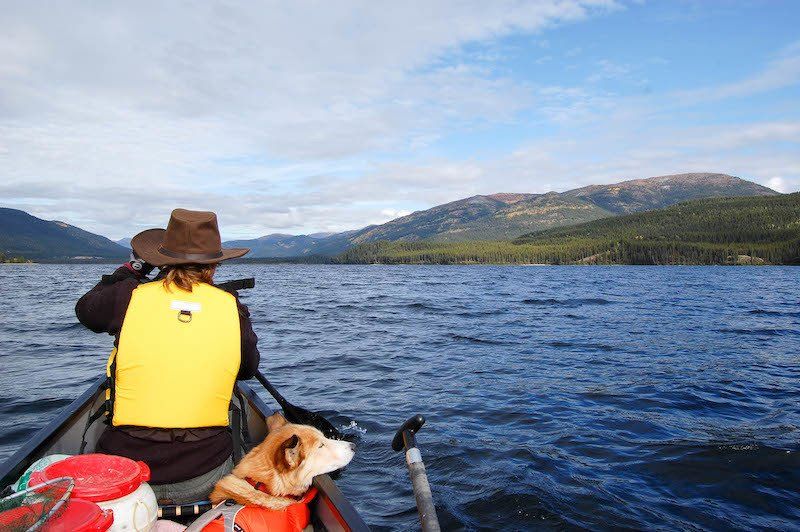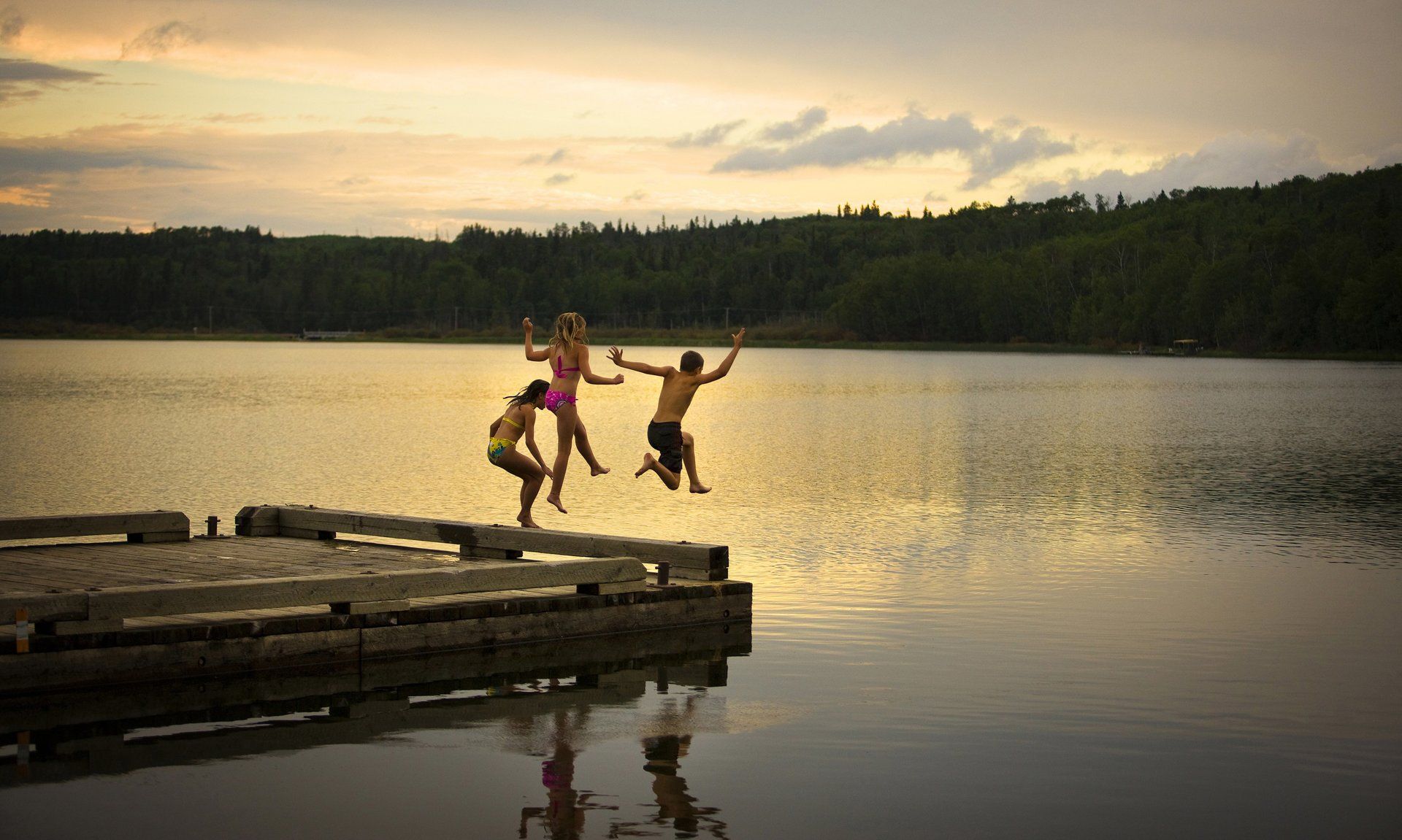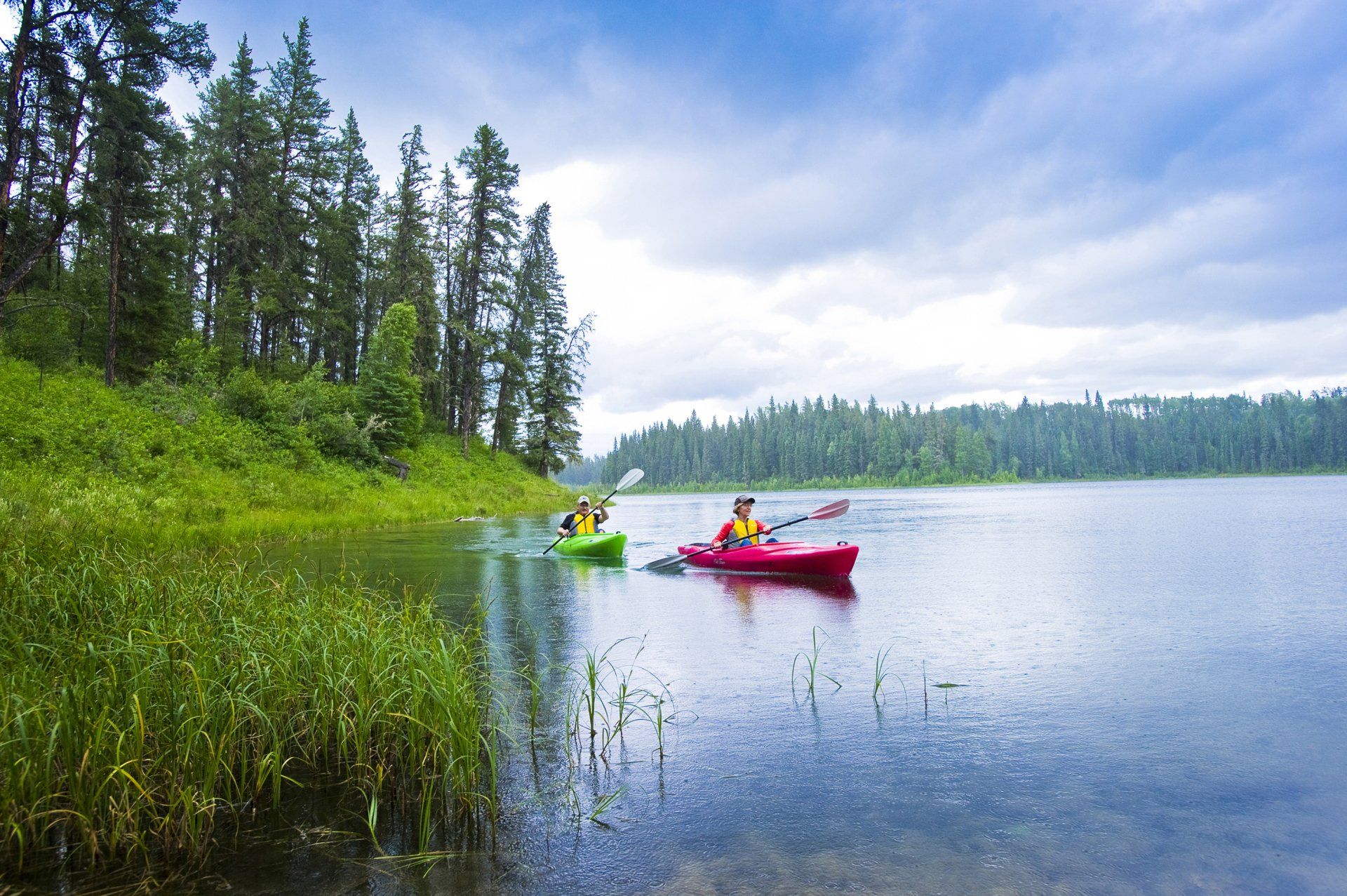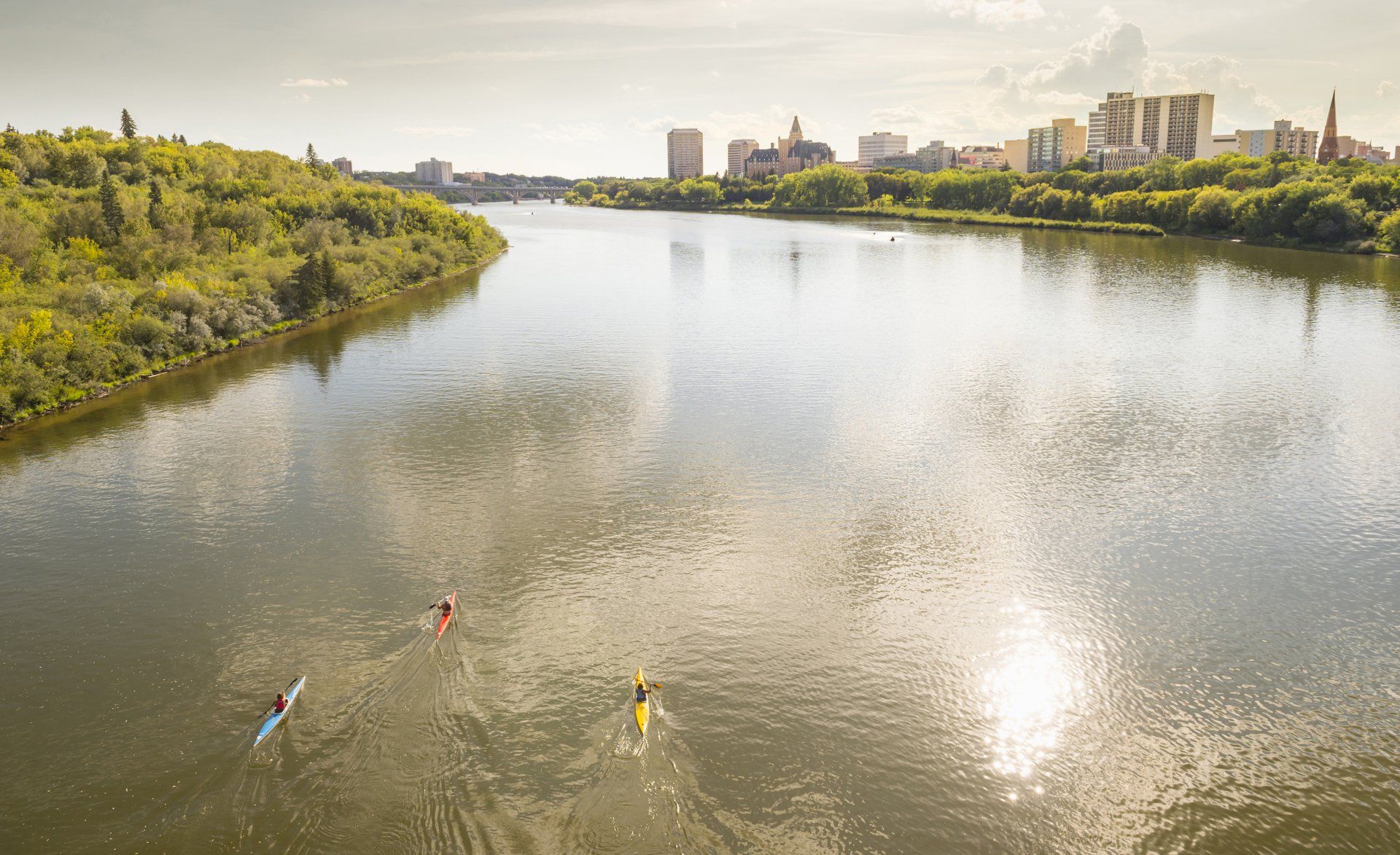Back to Saskatchewan
Churchill River Canoeing, SaskatchewanNemeiben Lake to Missinipe9 nightsFrom £1555 per person
Price includes:
Two nights in Missinipe, Seven nights canoeing trip on full-board, all canoe and camping equipment, services of an experienced guide and transfers if required between La Ronge and Missinipe.
The Churchill River is unique in its form in that it is a series of lakes which are joined by rapids or falls. Flowing over the Precambrian Shield, it passes through a forested landscape of rock outcroppings and muskeg. The many lakes making up the Churchill are sprinkled with tree-covered islands. The rapids are generally short and shelf-like in nature. Both novice and seasoned canoeists enjoy travel on the river because all the difficult rapids can be easily portaged.
The first third of this trip follows a series 5 lakes and 6 portages connecting Nemeiben Lake to the Churchill River. Our total trip is about 190 kilometres. This portion of the route is typical Precambrian Shield country. Beautiful rock outcroppings form great camping spots all along some of these lakes. This is mixed with some muskeg lakes and wet portages.
You then get to the Churchill River. The Cree call the river Missinipe or Big Water. They have been its inhabitants for thousands of years and continue to live along its shores. The Churchill was part of the main voyageur route across the continent during the fur trade era, and you will visit a site of an old fur trade post.
The trip is a great mix of peaceful lake paddling, challenging portages and thrilling white-water. You’ll get to see eagles, pelicans, osprey, moose and bear.
Please note we can book a variety of other guided and self-guided canoeing trips in Saskatchewan, including for more experienced paddlers, so please contact us and we can help you with other options.
15 June - Arrive in Missinipe
You can either rent a car in Saskatoon and drive to Missinipe, approx. 280 miles, or you can fly to nearby La Ronge and take a transfer. We would recommend driving if you want to explore more of the stunning province of Saskatchewan, and enjoy some more outdoor activities.
Meet the group at Churchill River Canoe Outfitters in Missinipe, where you will overnight. The guides will brief you on the trip and review paddling strokes, canoe manoeuvres and safety.
16 June - Transfer to Nemeiben Lake
In the morning you will head by van to Nemeiben Lake (65 km) and begin your canoeing. This is a large island filled lake that takes at least a day to paddle.
17-22 June - Canoeing
Then comes a series of 5 lakes with short portages. This takes us to the Churchill River on Trout Lake. Some of these portages are swampy. Be prepared to get wet. This portion of the trip used to be a route to bring supplies – mainly pemmican to trade with the voyageurs as they paddled the Churchill River. If you know what to look for there is still evidence of that history.
That history also shows itself on Trout Lake. There is evidence of 2 trading posts these suppliers of pemmican used to trade with the voyageurs. We will visit one of those sites.
The portion of the Churchill River we will be paddling on this trip is typical of northern Saskatchewan’s Precambrian Shield. The forest is a mix of black spruce or white spruce, jack pine, trembling aspen and white birch. The forest floor is typically a thick layer of moss. The island filled lakes give the River an intimate feel. The granite of the Shield country is everywhere. The water in the Churchill River is clean and warm, typically reaching temperatures of the low 20s C by mid-summer.
The Churchill is a unique river. In Precambrian Shield country the rivers tend to follow the grain of the shield, usually northeast to southwest or vice versa. The Churchill cuts across this grain. In Precambrian times, numerous ranges of mountains cut across the land running from northeast to southwest. The Churchill of that day filled the valleys between the ranges and looked for a place to break through. These places became the rapids and waterfalls of the Churchill. What we are left with is a river that is made of beautiful lakes filled with islands (the peaks of old mountains). These lakes then flow over ancient ridges into the next lake forming the rapids and waterfalls common to the Churchill.
Even though this is primarily a lake trip, there are many rapids that can be run. These rapids tend to be short. There are many that are very easy, Class 1 or an easy 2. There are also many that are much more difficult. Any of the more difficult ones can be easily portaged. In some cases the group will portage the gear and run the canoes down the rapids. In total there are 8 mandatory portages.
Each group member is encouraged to contribute to the tasks of the canoe trip and your guides will act as helpful resource people. You will set-up camp each evening and help out cooking meals over a wood fire or camping stove from a combination of fresh, dried and freeze-dried products. Breakfasts consist of cereal, fruit and a main course such as blueberry pancakes or eggs and bacon. At lunch you will enjoy a selection of breads (rye bread, bagels, tortillas) with cheeses, sliced meats or veggies ... and of course, good old peanut butter and jam, followed up by cookies or fruit. Dinner consists of hors d’oeuvers, a main course then dessert. Entrees include chicken stir fry and pesto / pine nut / red pepper pasta. Perhaps there will be a salad and then brownies or a lemon desert. On cooler days, a hearty mug of steaming soup is always available, along with tea, coffee, hot chocolate or cold drinks.
23 June - Transfer back to Missinipe
On your final day, you will end at either Devil Lake or Otter Rapids, where you will be picked up and transferred back to Missinipe.
Transfers are available back to La Ronge airport for the late afternoon flight back to Saskatoon, but we recommend staying the night at Churchill River Canoe Outfitters and having a final celebratory meal with your fellow paddlers.
24 June - Depart from Missinipe
Either transfer back to the airport, or continue by car to explore more of Saskatchewan.







